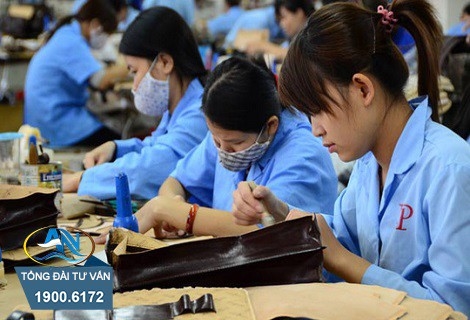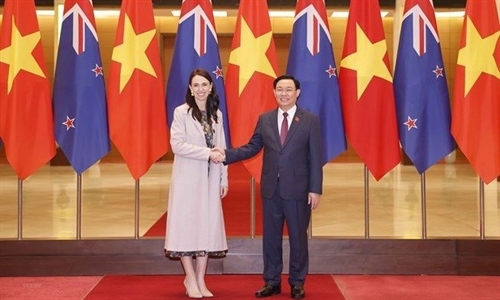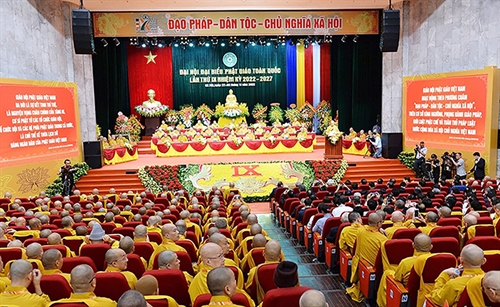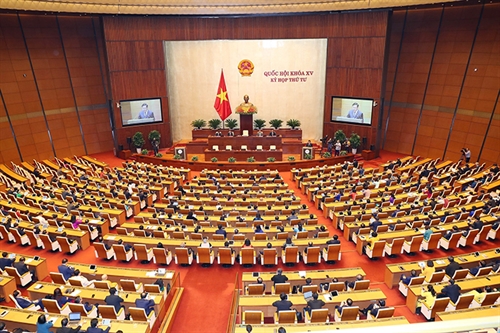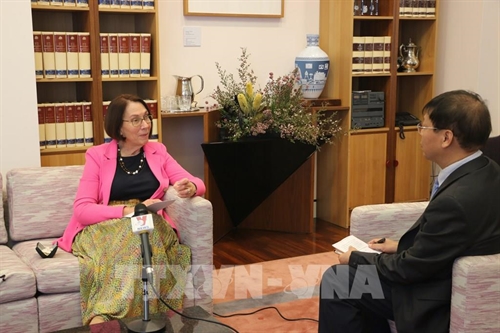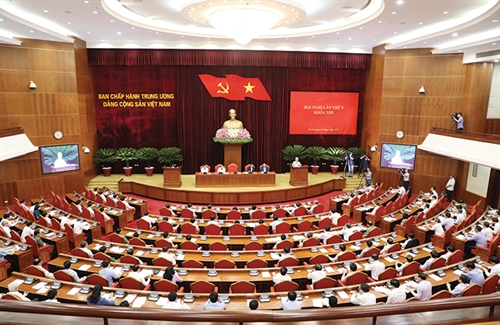Prof. Nguyen Hong Thao
The United Nations Convention on the Law of the Sea (UNCLOS), that codified and progressively developed international law in the maritime domain, has received wide recognition and support from the international community. To the 40th anniversary, December 10, 2022, the Convention has been ratified by 167 countries and the European Union (EU), 150 countries have become parties to the Agreement relating to the Implementation of Part XI of the United Nations Convention on the Law of the Sea of December 10, 1982, and 90 countries have acceded to the Agreement for the Implementation of the Provisions of the United Nations Convention on the Law of the Sea of December 10, 1982 relating to the Conservation and Management of Straddling Fish Stocks and Highly Migratory Fish Stocks, adopted on August 4, 1995. The Convention manages all oceans on the Earth, with all living and non-living resources and all activities at sea. Based on the principle that “the Land dominates the Sea”, the Convention allows a coastal State to extend its sovereignty beyond its land territory and internal waters and, in the case of an archipelagic State, its archipelagic waters, to an adjacent belt of sea of 12 nautical miles, described as the territorial sea. A coastal State has exclusive sovereign rights and jurisdiction over the exclusive economic zone of 200 nautical miles from the baseline and continental shelf, which is the natural prolongation of its land territory to the outer edge of the continental margin, or to a distance of 200 nautical miles from the baseline from which the breadth of the territorial sea is measured where the outer edge of the continental margin does not extend up to that distance. In exercising their rights and jurisdiction, coastal States must not infringe upon or result in any unjustifiable interference with navigation and other rights and freedoms of other States in their economic exclusive zones and continental shelves as provided for in this Convention. The Convention provides for the most comprehensive legal regime of maritime zones on the balance of the expansion of sovereignty rights and jurisdiction of the coastal state in the exclusive economic zone and continental shelf with the common interests of the international community in the High Seas and the Area - common heritage of mankind.
The UNCLOS is an effective legal instrument for Vietnam to protect its maritime sovereignty, sovereign rights and jurisdiction. The Convention provides principles of the delimitation of maritime zones, facilitating the settlement of maritime disputes by peaceful means. Adhering to the provisions of the Convention, Vietnam is the most successful country in the region to resolve maritime disputes with the most diverse tools, from delimitation to provisional arrangements. In the process of implementing the Convention, Vietnam has, with other countries, made creative contributions to clarification and completion of the Convention’s provisions on maritime delineation.
Vietnam had participated in the UN Third Conference on the Law of the Sea since 1977. Concerning the States’ discussion on the method of delimitation, Vietnam, as a member of the G77 group, supported the application of the equitable principle in delimitation. Having many offshore islands and archipelagoes, Vietnam has the advantage in applying the median/equidistant principle in delimitation, but Vietnam has supported the equitable principle. Vietnam argued that the equitable principle requires the respect for the ex aque et bonno rights of coastal States to the seas and continental shelf to which they are entitled in accordance with applicable international law. A principle is considered equitable if it helps achieve an equitable solution in delimitation, on the basis of equal and good-faith negotiation in order to achieve a satisfactory solution in accordance with international law and accepted by the parties concerned.
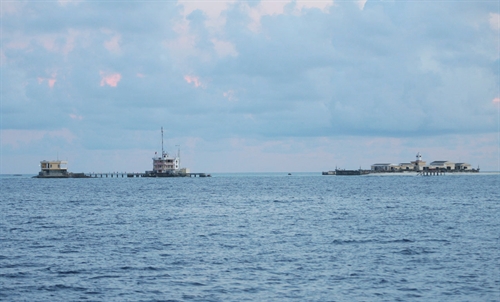 |
| Da Tay (West Reef) island of Truong Sa (Spratly) islands__Photo: Phuong Hoa/VNA |
Understanding the general trend of the development of the law of the sea, on May 12, 1977, the Vietnamese Government issued a declaration on the principles of determining the scope of Vietnam’s waters in accordance with the provisions of the Convention. This is one of the earliest declarations in the spirit of the UNCLOS in Southeast Asia. The May 12, 1977 Declaration on the territorial sea, contiguous zone, exclusive economic zone and continental shelf of Vietnam has officially and publicly stated that Vietnam’s position on resolving maritime disputes is “... and the countries concerned, through negotiations on the basis of respect for each other’s independence and sovereignty, in accordance with international law and practices, to settle maritime and continental shelf issues of each party”.
It can be obviously seen that Vietnam’s position in resolving maritime disputes is through direct and good-faith negotiation solutions, on the basis of respecting the lawful rights and interests of the parties concerned, in order to achieve an equitable solution acceptable for concerned parties.
On June 23, 1994, Vietnam’s National Assembly issued the Resolution on the ratification of the UNCLOS, which also clearly affirms Vietnam’s position to: “…settle disputes over territorial sovereignty as well as other disagreements related to the East Sea through peaceful negotiations in the spirit of equality, mutual understanding and respect, respect for international law, especially the UNCLOS, and respect for the sovereign rights and jurisdiction of coastal States over exclusive economic zones and continental shelves...”
Vietnam has creatively applied the equitable principle in delimitation of exclusive economic rights and continental shelf with Thailand in 1997, in the Gulf of Tonkin with China in 2000, in the delimitation of continental shelf with Indonesia in 2003, in the delimitation of exclusive economic zone with Indonesia in 2022, and entered into provisional arrangements of a practical nature with Malaysia, Cambodia and China. In the delimitation of the Gulf of Tonkin, the equitable principle is interpreted and applied by Vietnam in three steps. First of all, the two sides draw a median/equidistant line as a starting delineation line. In the second step, the starting line would be adjusted by the impact of special circumstances. In the case of the Gulf of Tonkin, the position of Bach Long Vy Island under Vietnam’s sovereignty created a special circumstance where it is located in the middle of the Gulf and could deviate the median/equidistant line toward the Chinese side. Vietnam is aware that this island should not be given 100 percent effect in the delimitation, so it has proposed that the island could be given 50 percent effect. The Chinese side tried to downplay the validity of the island, considering it to be given only zero percent effect in the delimitation. The two sides eventually came to an agreement that the island has a belt of 15 nautical miles, or is given 25 percent effect in the delimitation. In the third step, Vietnam has verified the proportion of the ratio of coast lengths and delineated waters to ensure an equitable solution: 695km/730km (1:1.1) and 46.77 percent/53.23 percent (1:1.135) of the Gulf. The Gulf of Tonkin case contributed to confirming the States’ practice in maritime delineation. The three-step principle in maritime delimitation has been officially recommended by the International Court of Justice (ICJ) since 2009 in the 2009 Snake Island (Ukraine/Romania) case that came nine years after the Gulf of Tonkin delineation.
Vietnam’s practice has also led to the consistency on the role of offshore islands in delimitation. In the Vietnam-Thailand maritime delimitation in 1997, the location of the Tho Chu island is more than 50 nautical miles from the Vietnamese coast, creating a special circumstance. The two sides agreed to give it 32.5 percent effect in the delimitation. In the delimitation of the continental shelf with Indonesia in 2003, Con Dao played only a certain role. The note verbal of the Permanent Mission of the Socialist Republic of Vietnam dated March 30, 2020, showed Vietnam’s support for the conclusions of the South China Sea (known as the East Sea in Vietnam) tribunal award of 2016 that “none of the high-tide features in the Spratly Islands is capable of sustaining human habitation or an economic life of their own within the meaning of those terms in Article 121.3 of the Convention.”
The equitable principle is also applied flexibly by Vietnam. In the delimitation of the Gulf of Tonkin, the Chinese side persistently proposed negotiating a common fishing zone in parallel with the talk on the maritime delineation in the Gulf of Tonkin and emphasized that without agreement on this issue, it would be difficult to definitively settle the problem of maritime delineation of the Gulf of Tonkin.
Initially, Vietnam advocated separating the issue of fisheries from the issue of delineation, but it also realized that the failure to solve the problem of fisheries could interfere with the final resolution of the entire issue of delineation in the Gulf of Tonkin including territorial sea boundaries, exclusive economic zones and continental shelves. At that time, it would be possible that the entire Gulf could have continued to be considered an overlapping zone between the two sides, and the situation there would have continuously been unstable. Vietnam has combined Article 74 and Article 62.3 of the UNCLOS to discuss with China to find a reasonable solution. According to Article 62.3, when managing living resources, coastal States should take into account “the need to minimize economic dislocation in States whose nationals have habitually fished in the zone or which have made substantial efforts in research and identification of stocks.” The management of straddling fish stocks in the Gulf of Tonkin relates to Articles 63 and 123 on the cooperation in the management of migratory fish stocks in the exclusive economic zones of the parties. Therefore, Vietnam agreed to the delimitation of the exclusive economic zone in two stages. The Agreement concluded on December 25, 2000, provided for a single maritime limit for both the continental shelf and the exclusive economic zone. However, while the continental shelf limit is final and definitive, the exclusive economic zone limit is only officially established after the temporary fishing zone in the North and the joint fishing zone in the South of the Gulf expire. A temporary fishing zone is an innovation that contributes to the law of maritime delineation under which delineation of the exclusive economic zone, depending on the circumstances, can be carried out in two steps. The first step is to establish a temporary fishing zone with a period of four years to solve the problem of stabilizing the lives of fishermen affected by maritime delineation, not causing economic disturbances in countries where citizens often fish in the disputed area before delimitation. The UNCLOS does not provide further for this condition, but upon application of the equitable principle, this situation may be special and should be taken into account. The two sides also agreed to have a common fishing zone in the 20th parallel south where each side contributes part of their own exclusive economic zones. This agreement has a term of 12 years and is automatically renewed for three years. Second, by 2020, when this agreement ends, the exclusive economic zone limit has been delineated totally and the two parties can discuss another cooperation agreement on the basis of Article 123 of the UNCLOS.
Vietnam also demonstrates a flexible view in applying the theory of a single maritime boundary line. In the 1984 Gulf of Maine case between Canada and the United States, the ICJ recommended the application of a single boundary line for both the exclusive economic zone and the continental shelf in places where the opposite coasts on both sides are no more than 400 nautical miles apart. The 1997 Agreement between Vietnam and Thailand was the first agreement on the single maritime boundary in the region. Rulings issued later by international courts and arbitrations confirmed this trend in Guyana and Suriname, Barbados and Trinidad and Tobago, Nicaragua and the Colombians, Qatar and Bahrain, Romania and Ukraine cases. Vietnam concluded with Indonesia a separate economic zone delineation agreement on December 22, 2022, after 12 years of negotiation. The existence of two limits for two maritime zones with not the same legal status is also a way of enriching the content of the equitable principle in maritime delineation.
Vietnam continues to maintain the Agreement on joint exploration and exploitation of oil and gas in overlapping waters with Malaysia (signed in 1992), and promote negotiations on joint oil and gas exploitation cooperation in the overlapping areas of Vietnam, Thailand and Malaysia (starting negotiations since 1998). In the future, Vietnam and Cambodia may conduct maritime delineation negotiations. While the delineation has not been completely resolved, the historic waters of Vietnam and Cambodia in 1982 are still the waters under joint management as agreed upon by the two countries. The maintenance of agreements and negotiations on the joint exploitation of overlapping seas is a vivid reality that contributes to the international practice of “provisional arrangements of a practical nature” in the spirit of understanding and cooperation of concerned countries on the basis of the provisions of the UNCLOS. In accordance with international law and practices, during this transitional period, the provisional arrangements shall not jeopardize or hamper the reaching of the final agreement.
In summary, Vietnam’s position in resolving maritime disputes, including the issue of maritime delineation, is institutionalized in Vietnamese legal documents and is consistently expressed through treaties that Vietnam has concluded with relevant countries as “through negotiations” to achieve “a solution” in conformity with international law and practices. The UNCLOS, which applies the equitable principle, aims to achieve an equal solution. This view is absolutely correct, reasonable, in line with general trends and regional practices, and in accordance with international law and practices. Through agreements on maritime delineation concluded with concerned countries and “provisional arrangements of a practical nature”” or “joint development” of overlapping areas in the sea, Vietnam has shown in practice the correct policy of resolving all international disputes by peaceful means and the determination to work with the international community to build a fair legal order at sea and enhance development and cooperation at sea.-
